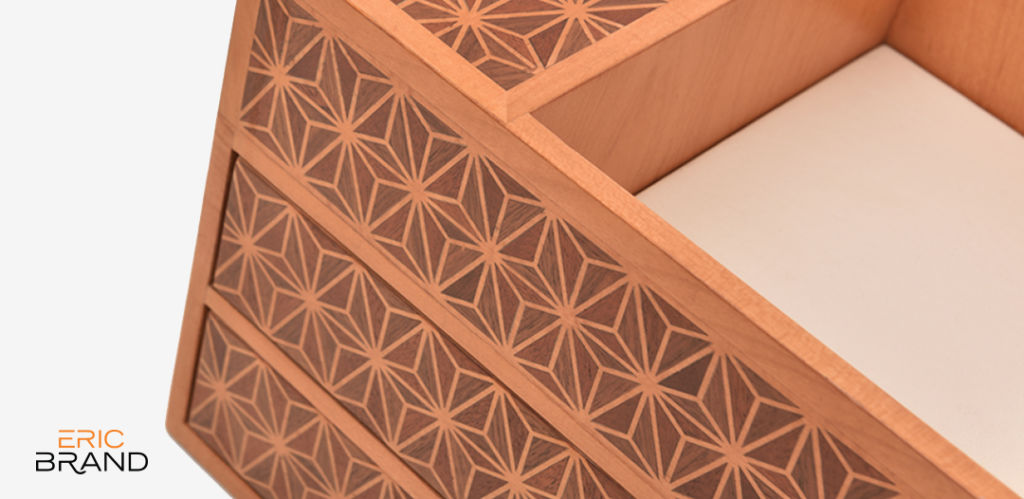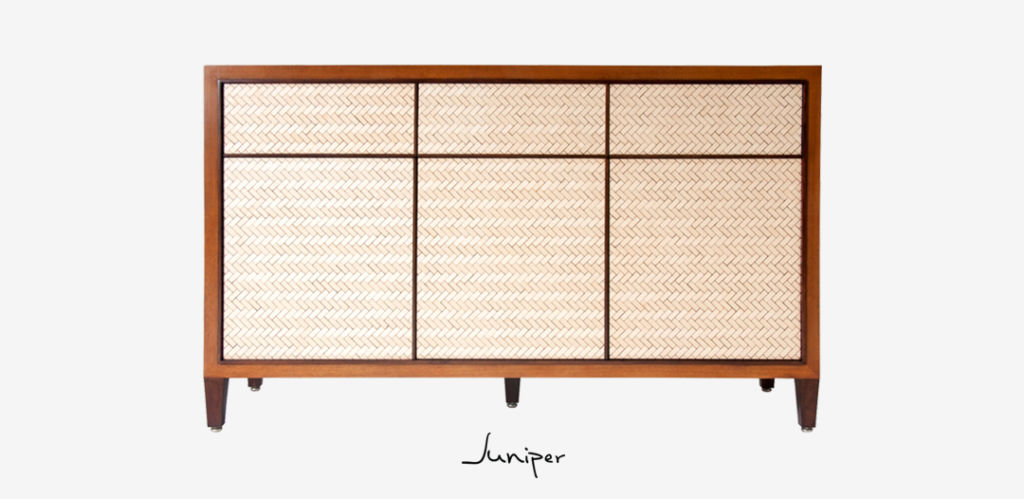A favorite furniture design of the French court in the 1700’s, marquetry is the addition of intricate veneer patterns to furniture, panels and decorative objects. The beauty of marquetry lie in the patterns created by different grains and contrasting colors of woods such as mahogany, walnut, maple and burl wood along with metals and more exotic materials like ebony, ivory and mother of pearl. Often confused with inlay, marquetry lays the design materials in a thin veneer on top of a surface whereas inlay surfaces are carved out to receive the design materials. Marquetry patterns are flexible in design due to the ease of working with veneer. The outcome is usually an heirloom-worthy piece that adds a touch of distinction to a room, proof that marquetry design really is a whole lot greater than the sum of its pieces.

Marquetry includes geometric patterns as well as a vast array of random patterns such as swirling arabesques and free form shapes used to create pictorial images. Designs range from 2 different wood veneers cut into geometric patterns on up to the sophisticated arabesque designs of Boulle marquetry created by Andre-Charles Boulle with exotic veneers of tortoiseshell, mother of pearl, gilt copper, pewter and ebony.
Although ancient examples of marquetry exist from Roman times and Asia Minor, these designs tended to be simple linear patterns using straight grain woods due to the limitations of their tools which were simple knives. Techniques in wood marquetry became far more sophisticated in the Flemish centers of luxury cabinet making early in the 16th Century. This was attributable in no small part to the invention of the fret saw which allowed artists to cut the thin veneers into complex shapes and even curves.

A decade later the technique experienced an explosion of popularity and was designed by royal and Parisian cabinet-makers (ébénistes) to create luxurious furnishings for Versailles and Louis XIV’s other royal residences. Louis XV’s Bureau du Roi made in the 1780’s was one of the most famous pieces of royal French furniture. Whilst most popular in France, marquetry was also visible throughout Europe, England and even the Middle East.
Fast forward to the 21st Century where laser cutting has brought efficiency and precision to creating marquetry allowing for increased production. The Juniper J10 cabinet features a torched herringbone design initially created in CAD then cut with a laser cutter according to the desired pattern. To create the desired 3D pattern on the doors and drawers, these maple veneer “tiles” are individually burned on their outer edges, a process, called sand shading. This technique involves dipping each tile in hot sand to better control the burning effect; the deeper you go, the hotter the sand is, and therefore the darker the shading will appear.
The resulting burnt wood tiles are cooled and assembled like puzzle pieces according to the herringbone design then pressed on the laminating press to create the patterned veneer for the drawers and doors of the J10 cabinet.
